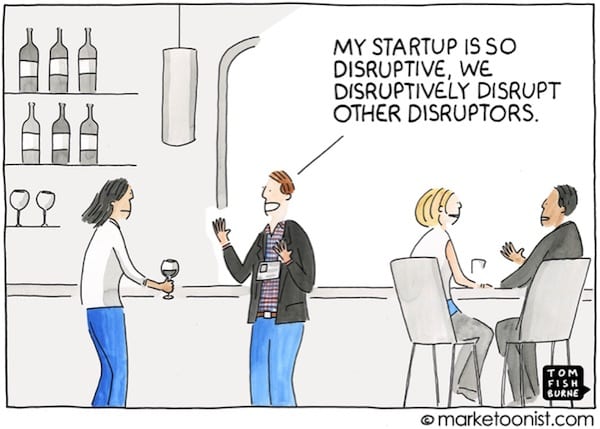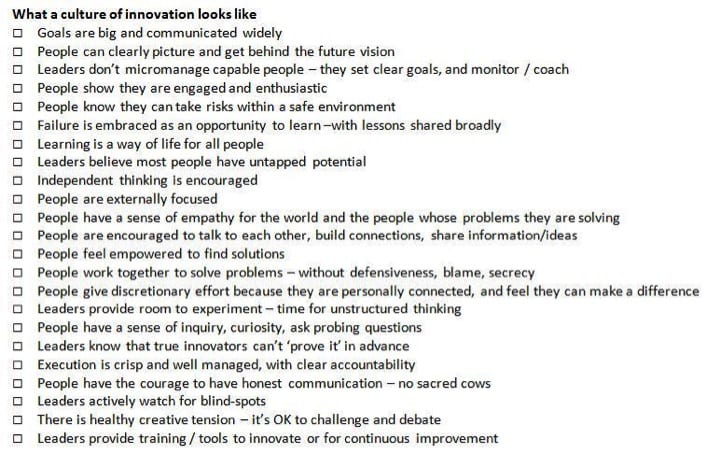This article is written by invited guest author Jolie Huang.
Over the course of 2016, I interviewed several innovation pioneers to find out the most important questions that every innovator should ask in 2017. Since “innovation” has become an overused buzzword, organizations are putting more attention into forward-thinking strategic planning. Yet, as the pace of change accelerates, any breakthrough in innovation could die within a couple of months (think about the recent PokemonGO phenomenon). After a painful and costly process, we wonder what remains from the so-called innovation.
If you view yourself as an innovator who fights to be disruptive and wants to make the world a better place, here are the questions that I have most frequently come across:
- What does innovation really mean?
Companies fail in innovation because they misunderstand what innovation really means. It is more than M&A activities or mindlessly creating products and services; rather, it is a way to rethink how we satisfy our customers’ needs. It should be a mindset — identifying future opportunities within challenges. Managers should look above existing business models and plan their strategies with an eye towards the future, not within the present. Frequently, decision-makers are shortsighted, considering only the immediate return, and consequently innovation does not go far enough to reach its full potential.

- What kind of experience does my customer want?
There’s already so much material out there regarding customer experience, and I cannot put enough emphasis on its importance. Customers are becoming more sophisticated than ever, and it is hard to have an effective system-level approach that can perfectly predict the fast-changing human behaviors and attitudes. In today’s experience-driven economy, companies like Airbnb and Disney World are selling experiences to their customers, not products. Virgin America is known for reinventing the flying experience through technology, better cabin design, and a focus on travelers. By 2020, customer experience will overtake price and product as the key brand differentiator[i]. Focus on the aspects of your overall product or service experience that are most relevant to your customers.
Design Thinking is a tool that I constantly use to gauge the true unmet needs of the customers and to create human-centered solutions. Put people in the center of your innovation process, and rethink the way you attract, excite, and retain your customers. Data, on the other hand, is a valuable asset that every innovator can use to make customer intelligence accessible for experience design.
- Is my business ready for a change?
If your business has the right mindset and culture, congratulations — you are on the right track. However, here is the question you cannot ignore: Who are the key stakeholders for my innovation? Transformation cannot be achieved overnight. Transformation is achieved through long-term commitment, and you will have to learn from many failures along the way. The message needs to be clear: Your board and executives need to keep an open dialogue regarding innovation and be prepared for oncoming challenges. Your top managers need to provide adequate support. Your teams need to be ready to jump in projects that they have no prior experience. Your customers need to understand your value proposition.
Innovators require strategic foresight; they must be agile and resilient at the same time to drive success. Breakthroughs take years to decades, but senior management wants to see results quickly, and most organizations are not designed to make long-term commitments on the unforeseeable future. Remember, if you have an innovative mindset, you will be looking to find opportunities within these challenges.

- Do I have the right metrics to measure innovation success?
This is a hard question that every innovator needs to ask. Innovation is a concept, an idea, a dream — so how we truly measure innovation? Conventional methods track commercial opportunities, user growth, revenue generated, and increases in ROI. Some companies have started to measure the amount of entrepreneurial activity to encourage creative thinking. All of these methods are great, but it is time for innovators to hack innovation measurement and define their own innovation index.
Based on the Global Innovation Excellence Study, the results show that “There is a clear correlation between capability in innovation measurement and innovation success, yet less than 20% of companies believe they have a decent innovation measurement capability.”[ii] Here is what you can do. Start by defining a few KPIs as a reference and keeping this measurement as a priority from day one. The number of new offerings over time do not tell the entire story, nor do financials alone. You have to take human factor into account and design the right metrics to measure the success. Fundamentally, the only metric that matters is how your stakeholders perceive the value.
- Inside-out or Outside-in?
There is no definite answer for this question. It depends on your company size, target market, and current capability. Different combinations can work in various scenarios. Countless labs and innovation centers have been established in the last couple of years, creating inside-out disruptions. “Labs become a mechanism for collaborative action, incubators of future leaders, and the platform for people to make some of their greatest contributions to something bigger, not just do a job.” said Jennifer Comiskey, a former Director at IDEO. With this approach, your team needs cross-domain expertise to understand and switch between varying tasks while they work.
While internal innovation is driving large corporations toward new territories, some businesses are piloting startup partnerships and seeking alternative sources for innovation from the outside. Google for Entrepreneurs provides financial support to startup communities, and UBS’s US wealth-management business is partnering with the San Francisco-based robo-adviser SigFig. The Ecosystem 2.0 is built on partnerships with not only your peers, but with players on all levels, from startups to multi-billion dollar corporations.
Bottom line: There is never lack of ideas, only a lack of the right approach. I cannot emphasize enough the importance of having the right mindset to begin the innovation process. Next, look around to identify unmet needs from your customers, your key stakeholders, your potential partners, and apply human-centered approach to satisfy those needs. For a successful start to 2017, innovators must learn how to effectively execute the innovation process.
About the author:
 Jolie Huang is an innovation strategist, design thinker, and entrepreneur. She brings a hybrid mix of business, design, research, and technology experiences to improve people’s everyday life. She works with organizations large and small to shape future offerings and create human-centered design solutions.
Jolie Huang is an innovation strategist, design thinker, and entrepreneur. She brings a hybrid mix of business, design, research, and technology experiences to improve people’s everyday life. She works with organizations large and small to shape future offerings and create human-centered design solutions.
You can follow her on Twitter @joliecyhuang or check out some latest work at joliehuang.com.
_______________
[i] Customers 2020, Walker Info, http://www.walkerinfo.com/customers2020/
[ii] Global Innovation Excellence Study, Arthur D. Little, http://www.adlittle.com/reports.html?&view=561
